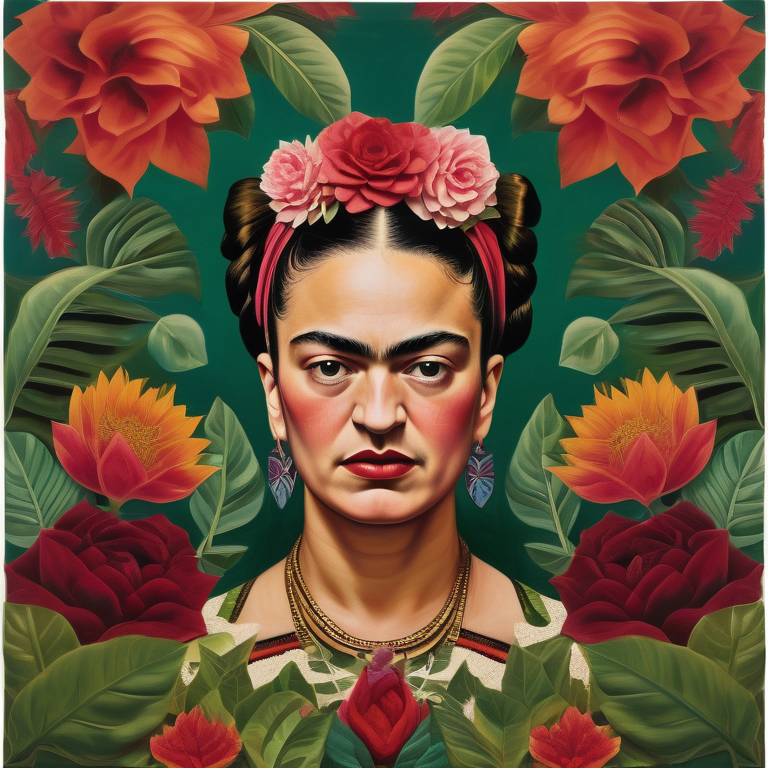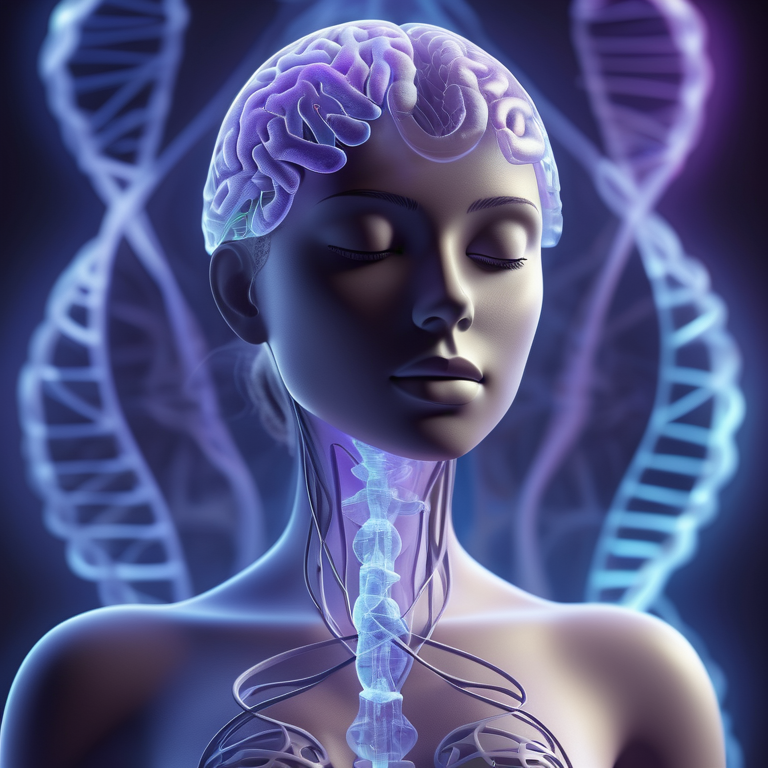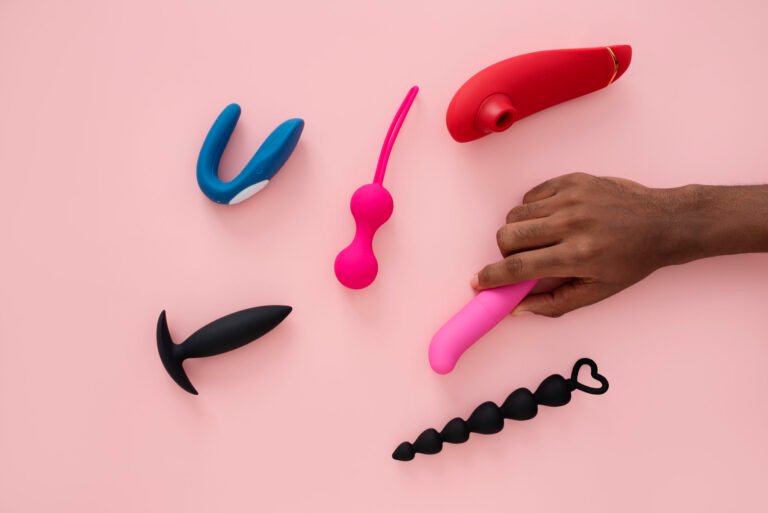Exploring Frida Kahlo’s Influence on Female Sexuality in Art

Key Highlights
- Frida Kahlo, a feminist icon and renowned artist, challenged traditional depictions of women in her artwork
- Her paintings explored themes of sexuality, gender identity, and body image, breaking societal norms
- Kahlo’s personal experiences, including her bus accident and tumultuous relationship with Diego Rivera, influenced her artistic expression
- Her art continues to inspire women today, empowering them to embrace their sexuality and challenge gender stereotypes
- Kahlo’s legacy has had a significant impact on contemporary feminist artists and popular culture, sparking the “Fridamania” phenomenon
Introduction
Frida Kahlo, born on July 6, 1907, in Coyoacán, Mexico City, is widely recognized as one of Mexico’s greatest artists and a feminist icon. Her artworks, predominantly self-portraits, delve deep into the complexities of female sexuality, challenging traditional depictions of women in art. Kahlo’s unique style and powerful symbolism, influenced by artists such as Pablo Picasso, have left an indelible mark on the art world and continue to inspire women today. Her works have also gained recognition and high prices, with her self-portrait “Roots” selling for $5.62 million at a Sotheby’s auction in New York in April 2006, setting a record as the most expensive Latin American work ever purchased at auction and making Frida Kahlo one of the highest-selling women in art.
Frida Kahlo: A Revolutionary in Art and Feminism
Frida Kahlo emerged as a revolutionary figure in both art and feminism. Born into a multicultural family and raised in Mexico City, Kahlo’s artistic journey began after she was severely injured in a bus accident at the age of 18. This life-altering event, along with other struggles in Kahlo’s life, including her tumultuous marriage and health issues, was the catalyst for her successful career as an artist and recognition as a feminist. Kahlo’s life, mostly being characterized by suffering, was rather the catalyst for her successful career as an artist and recognition as a feminist.
Breaking the Norms Through Art
Kahlo’s works of art served as a means of breaking societal norms and challenging traditional expectations. She fearlessly explored themes of sexuality, embracing her own bisexuality and portraying gender identities beyond the binary. Kahlo’s art celebrated the diversity of human experiences, including her own sexual orientation, and paved the way for more inclusive representations in the art world.
The Intersection of Art and Feminist Ideals
Kahlo’s art also intersected with feminist ideals, as she actively participated in the feminist movement of her time. Through her paintings, she addressed issues of female sexuality, including the stages of the sexual response cycle and body image. Kahlo’s portrayal of her own body, marked by physical pain and imperfections, challenged conventional beauty standards and empowered women to embrace their bodies as they are, making her a key figure in the surrealist movement and influencing the painting style of many female artists in terms of arousal and sexual expression.
The Symbolism of Female Sexuality in Kahlo’s Paintings
Kahlo’s paintings are rich in symbolism, particularly when it comes to female sexuality. She explores themes of sexual fantasies, pleasure, and even sexual health. Through her art, Kahlo demystifies and celebrates the complexities of female desire, providing a platform for open conversations about sexuality and promoting sexual empowerment.
Identity, Pain, and Liberation
Kahlo’s self-portraits often delve into the intersection of identity, pain, and liberation. By depicting herself in vulnerable positions and exploring her own emotional pain, she invites viewers into her world and challenges societal expectations. Her self-portraits, such as her first piece ‘Self Portrait in a Velvet Dress’, are a testament to her agency and resilience, demonstrating the power of art to heal and empower.
- In “The Two Fridas,” Kahlo explores her dual identity as a result of her failed marriage to Diego Rivera. The two Fridas represent different aspects of herself, one dressed in traditional Mexican attire and the other in a Victorian-style dress. The painting symbolizes her battle with identity and the pain of lost love.
- “Henry Ford Hospital” depicts Kahlo lying on a hospital bed, surrounded by imagery representing her miscarriage. The painting reflects her grief, loss, and the physical and emotional pain she experienced. It serves as a powerful expression of the female experience and the complexities of reproductive health.
The Role of Nature and Culture
Kahlo’s art often incorporates elements of nature and Mexican culture, reflecting her deep connection to her homeland. She draws inspiration from the Mexican revolution, incorporating symbols of struggle and resilience. Additionally, her use of natural imagery, such as flowers and animals, adds layers of symbolism to her artwork, representing growth, transformation, and the cycles of life.
Kahlo’s Contribution to Female Representation in Art
Kahlo’s art challenged the male gaze prevalent in traditional depictions of women and introduced the concept of the female gaze. Through her self-portraits, she reclaimed her own image and presented herself on her own terms. Kahlo’s art empowers women to embrace their own narratives and challenge societal expectations.
Challenging Gender Norms and Stereotypes
Kahlo’s art defied gender norms and stereotypes prevalent in her time. She often depicted herself in unconventional attire, such as her iconic velvet dresses, challenging the idea of how women should dress and present themselves. Kahlo’s fearless exploration of gender identity and non-conformity has paved the way for a more inclusive understanding of gender in art and society.
Empowerment and Vulnerability
Kahlo’s art embodies both vulnerability and empowerment. She bared her soul through her self-portraits, revealing her physical and emotional pain. By putting her own experiences on display, Kahlo empowered others to embrace their vulnerabilities and find strength in their own stories. Her iconic long hair, often depicted flowing freely and her nearly nude body, symbolizes liberation and the rejection of societal expectations.
The Impact of Personal Experiences on Kahlo’s Work
Kahlo’s personal experiences, including her bus accident and tumultuous relationship with Diego Rivera, had a profound impact on her artistic expression. Her art became a means of processing her physical and emotional pain, as well as a way to navigate her complex personal life. Through her work, Kahlo transformed her hardships, including her broken collarbone, into powerful artistic statements.
The Influence of Her Relationship with Diego Rivera
Kahlo’s relationship with Diego Rivera played a significant role in shaping her art. Their marriage, marked by infidelity and scandal, fueled her exploration of identity and sexuality. Kahlo’s art often depicted the complexities of their relationship, showcasing both love and pain. Her self-portraits, sometimes featuring her and Rivera together, provide glimpses into their intimate and tumultuous bond at the crossroads of love and pain. In December 1940, she married him and returned to Mexico, as both of them had been cleared as suspects in the assassination of Leon Trotsky (Herrera, 1983).
Overcoming Physical and Emotional Pain
Kahlo’s life was marred by physical and emotional pain, starting with her childhood battle with polio that affected her right leg. The bus accident she suffered as a teenager further exacerbated her physical struggles, including multiple fractures of her spine, collarbone, and ribs, a shattered pelvis, broken right foot, and a dislocated shoulder. Despite these challenges, Kahlo was a promising student headed for medical school before the accident, and she found solace and catharsis through her art. Her paintings became a means of expressing and overcoming her pain, allowing her to create beauty from her personal struggles.
Analyzing Key Works by Frida Kahlo
Two of Frida Kahlo’s most iconic works are “The Two Fridas” and “Henry Ford Hospital.” These paintings delve deep into themes of identity, pain, and the female experience. Through her art, Kahlo invites viewers to explore their own emotions and confront societal expectations. Her works serve as powerful reflections of the human condition and continue to resonate with audiences today.
“The Two Fridas” – A Tale of Duality and Identity
“The Two Fridas” is a powerful self-portrait that explores Kahlo’s dual identity and the pain of lost love. The two Fridas represent different aspects of herself, symbolizing the pain and struggle she experienced in her failed marriage to Diego Rivera, who had an affair with her younger sister Christina. This painting is a testament to Kahlo’s ability to confront her own identity and present herself authentically, challenging societal expectations in both Mexico and the United States.
“Henry Ford Hospital” – The Expression of Loss and Grief
In “Henry Ford Hospital,” Kahlo depicts herself lying on a hospital bed surrounded by symbolic imagery. This painting serves as an expression of her own experiences with loss and grief, particularly related to her miscarriages. Through her art, Kahlo confronts the emotional pain and trauma associated with reproductive health, providing a platform for dialogue and understanding.
Contemporary Reflections on Kahlo’s Legacy
Frida Kahlo’s legacy extends far beyond her own time. Her influence can be seen in the works of contemporary artists who continue to explore themes of identity, sexuality, and empowerment in the visual arts. As a feminist icon, Kahlo’s impact has also reached popular culture, with her image being widely celebrated and shared on social media platforms. Her art continues to inspire and resonate with audiences around the world, from Europe to the USA, showcasing the enduring power of her contributions to the visual arts. In October 1937, she was featured in that month’s edition of Vogue, which was the catalyst for the Italian designer Elsa Shiaparelli’s creation “La Robe de Madame Rivera ” (“Mrs. Rivera’s Dress”), further solidifying her influence and lasting impact on society today.
Kahlo’s Influence on Modern Feminist Artists
Frida Kahlo’s influence on modern feminist artists cannot be overstated. Her fearless exploration of female sexuality and identity has paved the way for a new generation of artists who challenge societal norms and celebrate the diversity of the female experience. Kahlo’s art serves as a powerful inspiration for artists who seek to use their work as a platform for social commentary and empowerment.
The Cult of Fridamania: Reviving Kahlo in Popular Culture
Frida Kahlo’s legacy continues to captivate and inspire in popular culture, giving rise to the phenomenon known as “Fridamania.” With a surge in recent years, Kahlo’s influence extends beyond art history, reaching a wide audience through social media, exhibitions, and merchandise. Her iconic status as a feminist icon and her unapologetic exploration of female sexuality have sparked a renewed interest in her life and works. The cult of Fridamania, as described by art critic John Berger, celebrates Kahlo’s bold and unconventional approach to self-portraiture, resonating with contemporary discussions on gender identity and body image. Through this cultural revival, Kahlo’s artistic vision and personal struggles remain relevant, ensuring her place in the pantheon of influential artists.
Conclusion
Frida Kahlo’s art revolutionized the portrayal of female sexuality, identity, and empowerment. Through her iconic works, she challenged norms, expressed pain and liberation, and empowered women globally. Her legacy continues to inspire modern feminist artists, invigorating the cult of Fridamania in popular culture. By exploring the intersection of nature, culture, and personal experiences, Kahlo’s art resonates with themes of vulnerability and strength. Share Kahlo’s impactful journey on social media and celebrate her enduring influence on art and feminism today.
Frequently Asked Questions
How Did Frida Kahlo’s Artwork Challenge the Traditional Depictions of Women?
Frida Kahlo’s artwork challenged traditional depictions of women by presenting a raw and unfiltered portrayal of the female experience. Through her self-portraits, she explored themes of sexuality, pain, and identity, rejecting the notion of women as passive objects of desire and embracing their agency and complexity.
In What Ways Does Frida Kahlo Continue to Inspire Women Today?
Frida Kahlo continues to inspire women today through her bold and unapologetic exploration of female sexuality, identity, and empowerment. Her art serves as a reminder that women have the power to define their own narratives and challenge societal expectations, inspiring women to embrace their authentic selves.
How Did Kahlo’s Personal Life Influence Her Artistic Expression?
Kahlo’s personal life, including her tumultuous relationship with Diego Rivera and her experiences with physical and emotional pain, had a profound impact on her artistic expression. Her art became a means of processing and confronting her own experiences, transforming personal struggles into powerful artistic statements.
How does Frida Kahlo’s personal life and experiences influence her portrayal of female sexuality in her art?
Frida Kahlo’s personal life and experiences, including her bus accident, miscarriages, and turbulent relationship with Diego Rivera, deeply influenced her portrayal of female sexuality in her art. Her artwork reflects the complexities of sexual desire, pleasure, and pain, challenging societal norms and providing a platform for open conversations about female sexuality.




